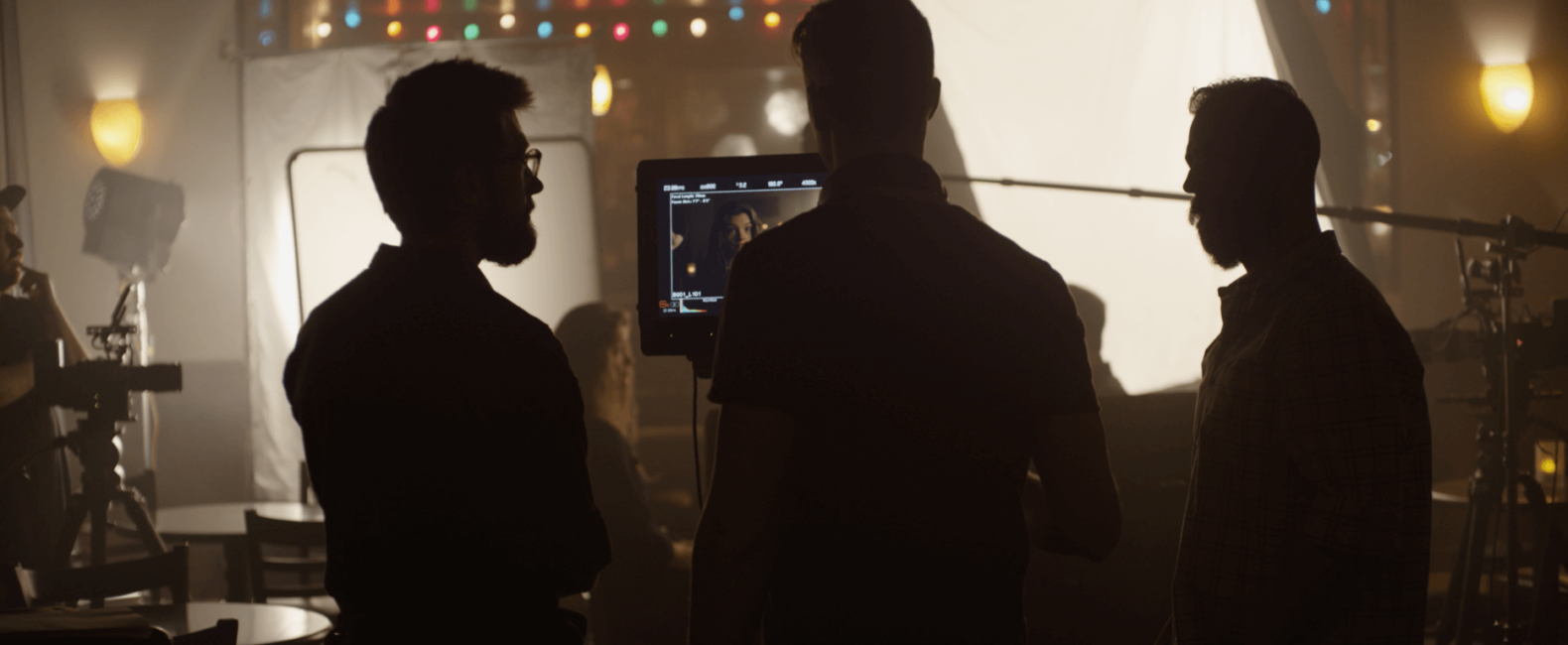Delivering constructive feedback is more of an art than a science. On either side of the conversation, you have human beings who bring their own talents, insecurities, and biases to the table. If not handled carefully, it can get messy very quickly. On the other hand, once you’ve mastered the art of giving feedback, it can be one of the most valuable assets in your creative endeavors. It just takes a bit of work.
Like most arts, people generally aren’t prodigies when it comes to giving feedback. There may be a few exceptions, but most of us need to put in the time, intentionality, and effort to make sure we’re handling this delicate situation well. And without that effort, too many people are under the impression that feedback is happening when it’s not. This great quote from George Bernard Shaw puts it nicely:
“The single biggest problem in communication is the illusion that it has taken place.”
Communication isn’t something that happens by accident. If you do one thing as a leader or collaborator (perhaps more importantly than any other thing in your entire career), invest in communication. Invest in the skillset required to give honest feedback that’s actually productive. As you engage in conversations with your team, here are a few things to keep in mind. Let them serve as key reminders for effective feedback.
Respect Their Intelligence
You collaborate with talented creatives because they’re smart. They’re good at what they do. It’s incredibly important to keep this in mind when you’re delivering creative critique. One of the biggest mistakes people make is insulting their peers’ intelligence by sugar-coating the truth or trying to hide feedback in a compliment sandwich. It’s important to be kind, but it’s also important to be honest, authentic, and upfront.
We’ll talk more about what this looks like tangibly, but first you need to enter the conversation knowing that your team deserves authenticity. It’s not helping anyone to hide the truth or dance around the topic. And, it doesn’t all have to be bad news, either.
In an article for Forbes, Joseph Folkman speaks about what it means to give honest feedback. He outlines an important point: The fact that honesty requires the bad and the good. Don’t be afraid to offer positive feedback when it’s earned. In fact, Folkman’s research showed that positive feedback was directly correlated to the amount of trust a leader has with their team:
“This research caused me to question the assumption that giving honest feedback implies giving mostly negative or corrective feedback. Consider if the people you work with daily do more things wrong than they do right. Ninety-nine percent of the actions of the people I work with each day are the correct actions, and only occasionally do they do something wrong. If I only notice and talk to them about only the things a person does wrong, am I being honest?
Let’s assume that another person does 50% of their work wrong. If I only talk to that person about what they do wrong, is that honest? The more we look at this data, the more apparent to me that honest feedback is mostly positive feedback with an occasional suggestion for change or improvement. Having a strong preference for giving people corrective feedback and avoiding positive feedback is not honest, and it certainly does not build trust. Trust from others comes as a result of having them believe you have their back and their best interest at heart.
So, give positive and corrective feedback. Don’t try to be too strategic and overthink the meaning behind the critique that you’re giving. Once again, your peers are smart. They know what’s really going on and if you try to mask your critiques with smoke and mirrors, they’ll see right through it.
Be Open-Minded
One reason people tend to default to the compliment sandwich—or worse, just lambasting their team—is because they’ve already decided what the problem is before they enter the conversation. They’re thinking, Oh crap, Bill didn’t cut this scene correctly because he doesn’t care and I need to deliver this feedback without insulting him. In Jean-François Manzoni’s article for Harvard Business Review, he details this deceptive mindset:
“[People] tend to frame difficult situations and decisions in a way that is narrow (alternatives aren’t included or even considered) and binary (there are only two possible outcomes—win or lose). Then, during the feedback discussion, their framing remains frozen—unchanged, regardless of the direction the conversation takes.”
Just because this example comes from Harvard Business Review doesn’t mean it doesn’t apply to your creative work. Even with pure collaboration, if you’ve already decided what’s right, you’re stifling the conversation before it even begins. In the case of “editor Bill” there may be a plethora of reasons for his poor performance. Maybe he doesn’t care. Or, maybe the briefs aren’t detailed enough or he’s overworked and feeling too much pressure to produce. The point is, you can’t know until you ask him. Enter the conversation knowing the symptoms, but with an open mind as to the underlying cause. From there, you’ll be starting with the solution in mind, not just the problem.
Focus on the Why
Speaking of which, the why should be your focus every time you give feedback. In fact, don’t even think about the feedback when you’re giving feedback; enter the conversation with the bigger picture in mind, wanting to solve a problem to make the work better, not necessarily reprimand someone. If you have anxiety or anger heading into that conversation, maybe you’re too focused on the problem, rather than the why.
Pixar has become the poster child for creative feedback. They consistently pump out incredible work for this reason, their ability to deliver notes without making it personal or vague or deceptive. Their “plussing” technique is derived from improv comedy and it follows the strategy that there can always be a way to improve or change an idea.
If you enter a conversation and say, “The emotion on this edit just isn’t working,” it doesn’t present anything beyond the problem. By focusing on the problem and the why it feels like a problem, you immediately draw your team into the solution instead of putting them in the crosshairs. Just listen to how the alternative sounds:
“For some reason, the emotion in this edit isn’t working. It feels too heavy handed. What could we do to avoid that?”
You’ve immediately refocused this moment on the bigger picture, not the problem. All of a sudden, your team member isn’t feeling an attack, or left alone to figure out what you mean. Instead, they’re being asked to join you on the journey of finding a solution. Of course, this means you must be comitted to communicating clearly and thuroughly. It may be more difficult in the short term, but less difficult than having your team mad at you or producing subpar work.
Honest Feedback is Privilege
And that brings us to the next point, and probably the most difficult part to swallow for anyone who’s trying to give proper feedback. There’s no real shortcut. Authenticity and trust don’t come inherently, they need to be earned by being vulnerable with your team over time. You wouldn’t point out your partner’s tendency to slurp his soup on a first date, and you can’t expect your team to accept your criticism on day one—or day 100, if you haven’t put in the work.
But, author Stephen Covey has some good news for you. It isn’t too late to earn that trust and it is possible: “Contrary to what most people believe, trust is not some soft, illusive quality that you either have or you don’t; rather, trust is a pragmatic, tangible, actionable asset that you can create.”
You can create trust. It just takes time and effort. There’s no book, method, or motivational speaker who can give you the answers if you haven’t put in the effort. You can have the best feedback technique in the world, but if your team doesn’t trust you, then it’s not going to work.
Be Consistent
The best way to earn that trust is to be consistent in giving your feedback. Too often, creatives don’t focus on delivering critical feedback or praise, and it just pops up during an emotional moment or whenever they feel like delivering it. With that approach, you’ll be the boy who cried wolf in no time—someone who’s taught their team that this feedback, good or bad, doesn’t really mean anything.
Here’s Bitium CEO Scott Kriz’s thoughts:
“There is no one-size-fits-all leader, but a consistent leader is able to build a team that will stand behind that leader and fight for the [team] because they understand and respect their consistency.
We live in a faster, more innovative, quicker-to-judge, and less predictable world than ever before. Providing employees and stakeholders with a consistent leadership style results in a level of comfort and certainty. Team members know what they’re walking into every single day rather than tiptoeing [around] wondering if the boss is going to be in a happy-go-lucky mood or if they need to be bracing to survive an apocalypse. They can focus on their job.”
Start establishing expectations today. Celebrate wins frequently with positive feedback. But, also let your team know that every single element of the creative needs to be spotless, so there are always going to be critical feedback sessions. It may be painful at the beginning, but they’ll begin to expect both positive and negative feedback—and they’ll respect you for it. Too many leaders believe being a friend or an enemy to their team is the key, when in truth it’s about being consistent day-in and day-out.
Delivering feedback isn’t about your team or a specific problem—it’s about you. It’s easy to think your approach should begin with a technique or model you’ve read, when in reality it’s about starting with who you are as a creative. Are you the type of person who believes in your team? Do you respect each person? Do you value the work? Start with an examination of what you believe and how you behave, then you’ll be ready to deliver feedback.
Read another perspective on vulnerability, and how your craft can teach you about yourself.






